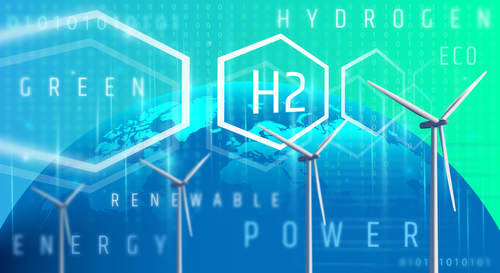Treasury issues proposed rule on the Clean Hydrogen Production Credit

The U.S. Department of the Treasury and Internal Revenue Service (IRS) have issued proposed regulations on the Clean Hydrogen Production Credit.
The Clean Hydrogen Production Credit aims to make production of clean hydrogen with minimal climate pollution more economically competitive and accelerate development of the clean hydrogen industry. These proposed regulations advance those goals and support the development of a robust U.S. clean hydrogen industry. It was established by the Inflation Reduction Act (IRA).
The Treasury Department’s notice of proposed rulemaking (NPRM) provides definitions of key terms in the statute, including lifecycle greenhouse gas emissions, qualified clean hydrogen, and qualified clean hydrogen production facility. The proposed regulation was developed after extensive consultations with experts across the federal government, particularly the Department of Energy (DOE), which oversees Argonne National Lab’s administration of the GREET model, and the Environmental Protection Agency (EPA), which administers the Clean Air Act.
“The Biden-Harris Administration is driving American innovation in emerging industries to create good-paying jobs, strengthen U.S. energy security, and help the U.S. clear hurdles in our clean energy transition,” U.S. Secretary of the Treasury Janet Yellen said. “Incentives in the Inflation Reduction Act are helping to scale production of low-carbon fuels like hydrogen and cut emissions from heavy industry, a difficult-to-transition sector of our economy.”
The proposal features credit tiers based on the emissions rate of a hydrogen production process. The amount of the credit ranges from $.60 per kilogram (kg) of hydrogen produced to $3 per kg of hydrogen, depending on the lifecycle emissions of the hydrogen production. The credit is available for 10 years starting on the date that a hydrogen production facility is placed into service for projects that begin construction before 2033.
The proposed rule is technology-neutral and describes how taxpayers must use the 45VH2-GREET model developed by Argonne National Laboratory to determine lifecycle greenhouse gas emissions. The statute also requires that to claim the credit, a taxpayer must have production and sale, or use of clean hydrogen verified by a qualified, unrelated third party. For taxpayers unable to use the 45VH2-GREET model because their hydrogen production technology and/or feedstock is not included, those taxpayers may petition the Secretary of the Treasury for a provisional emissions rate.
The proposed rules also describe how taxpayers may use energy attribute certificates (EACs), which demonstrate the purchase of clean power, to assess and document qualification for a particular credit tier. The proposed rules explain the three criteria that must be reflected in EACs being purchased by hydrogen producers claiming the tax credit: new clean power; deliverable clean power; and new, deliverable clean power generated annually, with a phase-in to hourly generation. The rules also detail eligibility requirements for hydrogen production from landfill gas in certain circumstances.
“Today’s announcement will further unprecedented investments in a new, American-led industry as we aim to lead and propel the global clean energy transition,” U.S. Secretary of Energy Jennifer Granholm said. “Hydrogen has the potential to clean up America’s manufacturing industry, power the transportation sector and shore up our energy security all while delivering good-paying jobs and new economic opportunity to communities in every pocket of America.”
The NPRM will be open for public comment for 60 days once it is published in the Federal Register. Some groups have already weighed in, including the Edison Electric Institute, which found the rule lacking.
“Treasury’s proposed rules do not offer sufficient flexibility to allow the scale up that will be necessary to support a U.S. hydrogen economy. Instead, they appear to rely on stringent requirements, particularly given the transition to hourly matching in 2028. This would undermine the commercial viability of this nascent domestic sector and severely limit the widespread adoption of hydrogen that is produced using grid-connected facilities. As a result, the cost-reducing benefits for hydrogen included in the Inflation Reduction Act would be squandered, and an important new tool that electric companies and customers could be using to drive down carbon emissions and costs would be sidelined,” EEI Senior Vice President, Energy Supply and Finance, and Chief ESG Officer Richard McMahon said.
McMahon added that EEI continues to support using annual matching requirements for the 45V credit and appreciates that the proposal initially would allow annual matching.
“We look forward to working with Treasury to finalize rules that help to unleash this transformational technology, not limit,” he said.
